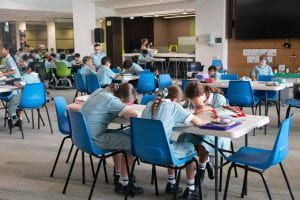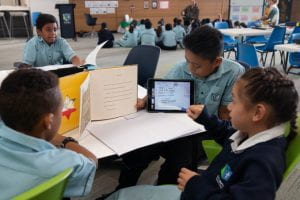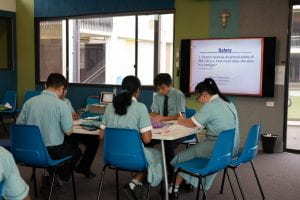Big kids and projects
I sometimes forget, in the rush of being in a K-9 school, (and loving the celebrity that comes from walking through stage 3) that most of my history in teaching is actually teaching big kids. Really big kids. For the past ten years, aside from teaching in my current setting, where little kids (and yes, they do scare me) are rife, my experience teaching mostly lies with senior TAS subjects. A range of subjects, a range of kids.
I’ve taught a number of subjects across the KLA to a year 12 cohort, and have taught in this time a range of students. My favourite though is major project subjects. The pressures of major project teaching I’ve always found to be greater than that of a normal exam based subject. Your own blood, sweat and tears, and sometimes, also funds (thousands of funds) go into the projects, and often times the new ulcer that you develop every year as you coax, push and cajole students across the line feels like you care more about their projects than they do.
Nothing beats that day though, where they are standing in front of their project and it’s completed. Where a student can stand there and say they’ve done a substantial amount of work and that they can see the culmination of that work. That their work is complete, finished, and for a lot of those students, better than anything they’ve done in their schooling career. That they have something that they can see is the fruit of their labour. My favourite projects are always those kids that you have to “hassle” the hardest.
The other day I heard my principal talking about good leadership being knowing what levers to pull and when. This is so relevant to general teaching as well as leading. Knowing that sometimes you can stand there with a student that has done nothing and what to rant but what comes out is “That’s okay….you still have time….we can fix this…” to setting goals for students, to calling parents, to hassling but with love.
This is the job of a teacher of projects. And this starts with empathy.
Maybe that pressure is because you can see kids wasting time over the course of the project. Maybe it’s because you can see that dip in their spirits as they realise that the date is coming up and they will never (even the best project) be completely happy with it.
The job of the project teacher is to be their support. As I said to a year 4 teacher once…I teach 17 year olds. I expect them to be organised, but I’m not stupid enough to trust them to be organised. We are the safety net for kids.
But that pressure is also flipped to pride when you see what the project is….fulfilment of potential. What an honour to be a part of that.



